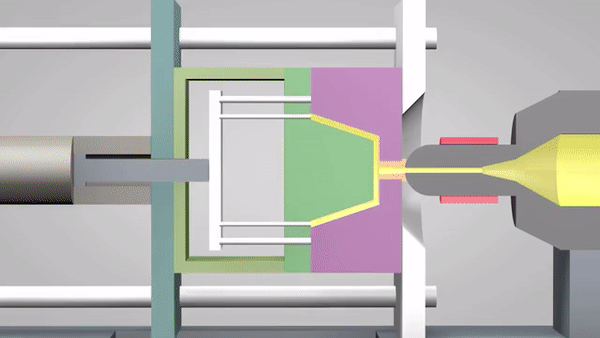Getting My Hon Hai Precision To Works
Wiki Article
Manufacturing Things To Know Before You Get This
Table of ContentsGetting The Manufacturing Industries To WorkOem - The FactsThe 45-Second Trick For ManufacturingGet This Report on Manufacturing9 Simple Techniques For OemA Biased View of Additive Manufacturing
The text on this web page is an example from our complete White Paper 'Shot Moulding for Purchasers' - * Example message * - for complete guide click the download button over! Introduction This overview is intended for people that are looking to resource plastic mouldings. It provides a much needed insight into all that is involved with producing plastic components, from the mould tool required to the moulding procedure itself.If you want to discover even more, the guide covers kinds of mould tools, as well as special completing procedures such as colours & plating. Words that are underlined can be discovered in the reference in the appendix ... Part I: Moulding: The Fundamentals The Benefits of Shot Moulding Plastic shot moulding is a really specific procedure that offers a number of benefits over various other plastic processing techniques.
Precision is ideal for very intricate components. Compared to various other methods, moulding allows you to include more features at extremely small tolerances. Have an appearance at the picture to the right. oem. You can hold this moulding in the hand of your hand and also it has managers, ribs, steel inserts, side cores and also openings, made with a sliding turned off feature in the mould device.
Some Known Questions About Lean Production.


from material feed & melting; material injection; shot time and ejection and also the re-closing of the mould tool ready for the next cycleFollowing Draft angles - The walls of a moulded part ought to be slightly tapered in the instructions in which the part is expelled from the mould device, to enable the component to be ejected conveniently.
Ejector stroke - The pressing out of ejector pins to eject the moulded component from the mould tool. Ejector stroke rate, length as well as timing requires to be meticulously controlled to stop damage to the subtractive manufacturing ejectors and also mould tool, but at the exact same time make the moulding cycle as brief as feasible.

Fascination About Mfg
Ribs - When a plastic component has slim walls, ribs are contributed to the design to make the thin wall surfaces more powerful Side cores - Side action which creates a feature on a moulded component, at an opposing angle to the normal opening direction of the mould tool. manufacturing industries. The side core requires to be able to withdraw as the plastic part can not be expelled or else.
Walls - The sides of a moulded part The message on this page is an example from our full White Paper 'Shot Moulding for Buyers'.
Production process for creating components by injecting molten product into a mould, or mold Simplified diagram of the process Injection moulding (united state punctuation: shot molding) is a manufacturing process for producing components by injecting liquified material into a mould, or mold and mildew. Injection moulding can be performed with a host of products primarily including metals (for which the process is called die-casting), glasses, elastomers, confections, and also the majority of generally thermoplastic and thermosetting polymers. Injection moulding is extensively utilized for producing a selection of components, from the tiniest elements to entire body panels of autos. Injection moulding makes use of a special-purpose maker that has 3 components: the shot system, the mould and also the clamp.
An Unbiased View of Plastic Manufacturing
Process characteristics [modify] Injection moulding makes use of a ram or screw-type bettor to force molten plastic or rubber product into a mould dental caries; this strengthens into a shape that has actually adjusted to the shape of the mould. It is most typically utilized to refine both thermoplastic and thermosetting polymers, with the volume used of the previous being substantially higher.: 13 Thermoplastics are widespread as a result of features that make them extremely die casting appropriate for injection moulding, such as simplicity of recycling, adaptability for a variety of applications,: 89 and ability to soften and also move on heating.In multiple dental caries moulds, each tooth cavity can be the same as well as create the exact same parts or can be special and create multiple various geometries during a solitary cycle. Moulds are typically made from device steels, yet stainless-steels and also aluminium moulds are ideal for specific applications. Aluminium moulds are normally ill-suited for high volume production or components with narrow dimensional resistances, as they have substandard mechanical properties as well as are extra susceptible to wear, damages, as well as contortion throughout the shot and also clamping cycles; nonetheless, aluminium moulds are cost-effective in low-volume applications, as mould construction prices and time are significantly reduced.
When enough product has actually gathered, the material is forced why not try these out at high pressure as well as velocity into the part developing dental caries. The specific amount of contraction is a feature of the material being made use of, and also can be reasonably foreseeable. To avoid spikes in pressure, the procedure generally makes use of a transfer placement matching to a 9598% full cavity where the screw shifts from a consistent speed to a constant stress control.
Top Guidelines Of Manufacturing
The packing stress is applied until the entrance (dental caries entrance) solidifies. Due to its small size, the gateway is typically the first place to strengthen via its whole thickness.: 16 Once the gateway solidifies, no even more product can enter the tooth cavity; as necessary, the screw reciprocates as well as obtains product for the next cycle while the material within the mould cools so that it can be expelled and also be dimensionally secure.Report this wiki page